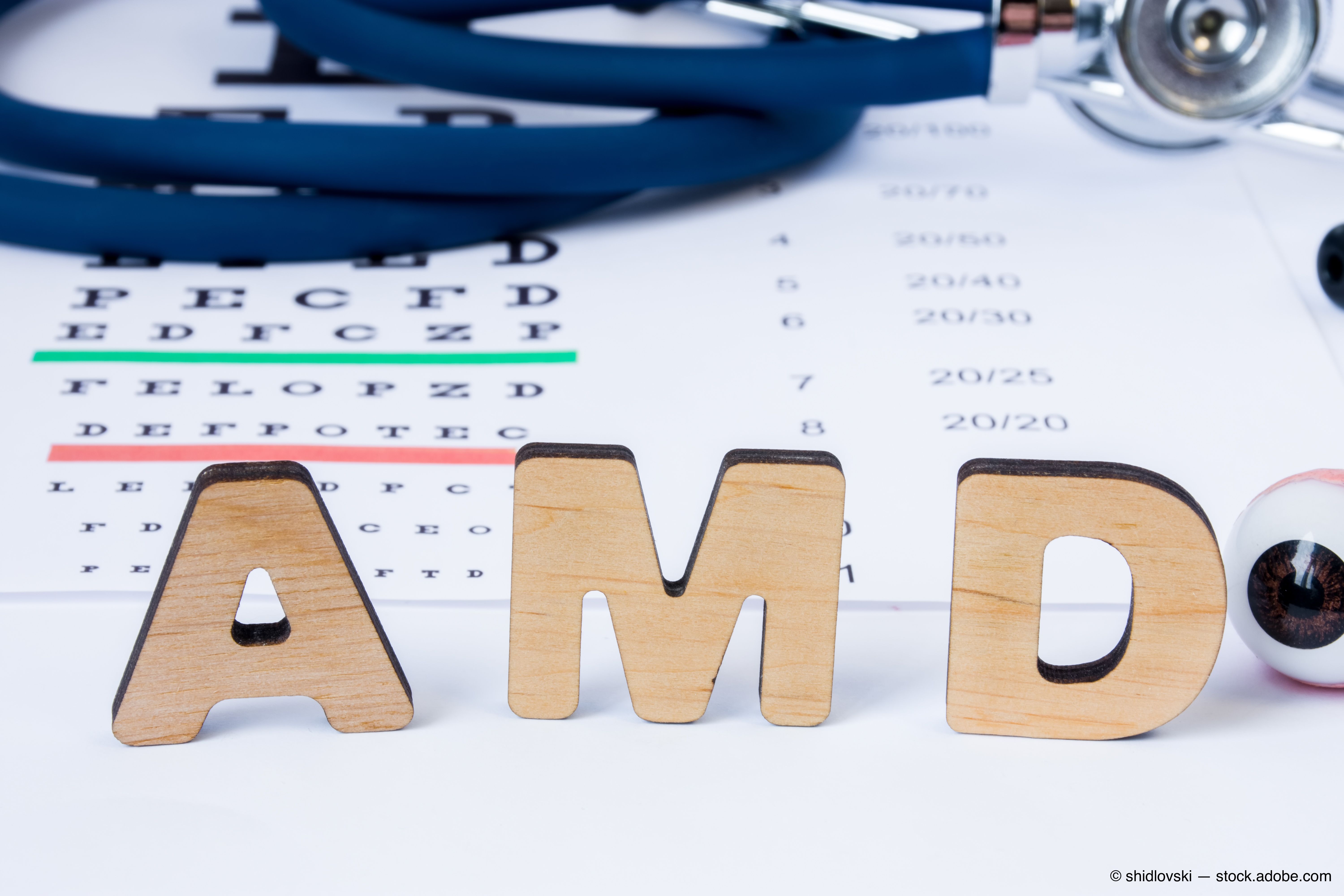Unity Biotechnology announces results from Phase 2 ENVISION study of UBX1325 in patients diagnosed with wet AMD
According to the company, UBX1325 monotherapy did not achieve non-inferiority through 24 weeks due, in part, to an unexpected 3.5 letter gain in the anti-VEGF control arm.
Unity Biotechnology Inc. today announced results from Part A of the Phase
The ENVISION study enrolled 51 patients with an average baseline visual acuity of 60.2 ETDRS letters who had ongoing active disease with a baseline CST of approximately 370 µm and had been on anti-VEGF treatment for at least 6 months. (Image courtesy of Adobe Stock/Shidlovski)

2 ENVISION study of UBX1325 in patients with wet age-related macular degeneration (AMD) who were not achieving optimum benefit with their ongoing anti-VEGF therapy.
According to a news release from the company, UBX1325 treatment generally maintained visual acuity for 6 months (change of -0.8 ETDRS letters from baseline), with a majority of patients not requiring any anti-VEGF rescue.
The company noted patients in the every-8-week aflibercept arm had an early and unexpected gain of 3.5 letters at week 2 which was mostly maintained for the duration of the study. As a result of the strength on the control arm, the study did not meet the non-inferiority threshold compared to aflibercept through 24 weeks.
“Maintenance of visual acuity in hard-to-treat patients with active disease after withdrawal of their anti-VEGF therapy suggests that UBX1325 had an active treatment effect in wet AMD. We continue to be impressed with the durability of effect of UBX1325 in this patient population,” Anirvan Ghosh, PhD, CEO of Unity, said in the news release. “Following a full analysis of ENVISION results, we will assess and optimize our resource allocation for future development of UBX1325. In the weeks ahead we will provide an update on Part B of the ENVISION study, and importantly, share 48-week data from the Phase 2 BEHOLD DME study. In DME, UBX1325 showed strong evidence of biologic activity and improvement in visual acuity – and, as a result, we plan to initiate a Phase 2b study in the second half of this year.”
The ENVISION study enrolled 51 patients with an average baseline visual acuity of 60.2 ETDRS letters who had ongoing active disease with a baseline CST of approximately 370 µm and had been on anti-VEGF treatment for at least 6 months. On average, patients received approximately 4 anti-VEGF injections in the 6 months prior to enrollment. At enrollment, all patients received a single run-in injection of aflibercept. Within 4-8 weeks following the run-in injection, patients were randomized to receive either (a) an injection of UBX1325 at week 0 and at week 4, or (b) an injection of aflibercept at week 0 and every 8 weeks thereafter, and followed for 24 weeks.
Phase 2 ENVISION data through 24 weeks
- UBX1325 demonstrated a favorable safety and tolerability profile with no cases of intraocular inflammation, retinal artery occlusion, endophthalmitis, or vasculitis
- Patients treated with UBX1325 had a mean change from baseline in BCVA of -0.8 ETDRS letters at 24 weeks compared to +3.1 ETDRS letters in the aflibercept control arm
- Patients treated with UBX1325 had a mean change from baseline in CST of +87.3 µm at 24 weeks compared to +30.5 µm in the aflibercept control arm
- 52% of UBX1325-treated patients went at least 24 weeks without receiving anti-VEGF treatment; 92% of UBX1325-treated patients achieved a maximal anti-VEGF treatment-free interval of 12 weeks or longer
According to the company, the ENVISION study did not meet the non-inferiority margin of -4.5 letters compared to aflibercept with an 85% confidence interval.
“Despite anti-VEGF therapies remaining the standard of care for neovascular AMD for the past two decades, there is an unmet need for treatments with new mechanisms of action to optimize vision outcomes and reduce the treatment burden associated with frequent injections,” Arshad M. Khanani, MD, MA, FASRS, director of Clinical Research, Sierra Eye Associates, said in the news release. “The ENVISION study results show that treatment with UBX1325 in nAMD patients with active disease maintained visual acuity with reduced injection burden over six months. The data from the ENVISION AMD and BEHOLD DME studies suggest that UBX1325, with its novel mechanism of action, could lead to a potential treatment option for patients.”
Jamie Dananberg, MD, chief medical officer of Unity, pointed to some encouraging signs from the study.
“Whereas today’s results from the ENVISION study and our Phase 2 BEHOLD study both show encouraging signs of biological activity of UBX1325, the relatively stronger efficacy we observed in DME may be related to the distinct underlying pathophysiologies of the two diseases,” Dananberg said in the news release. “We look forward to sharing 48-week data in our BEHOLD DME study in the coming weeks.”
Newsletter
Keep your retina practice on the forefront—subscribe for expert analysis and emerging trends in retinal disease management.